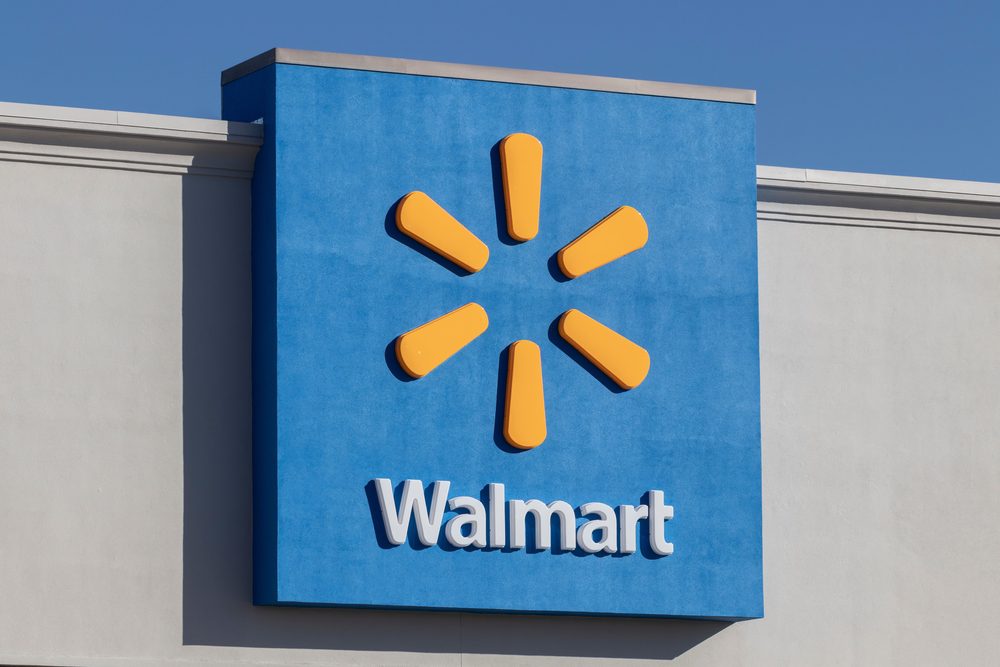
From its founding 60 years ago to its most recent press release this week, Walmart has never strayed from its core message: helping people live better and save money.
 While the Arkansas-based retailer has grown and changed over the decades, with more locations and services in more countries alongside a raft of new digital, delivery, financial and advertising businesses, those tools have always been part of the greater flywheel that gets customers to come inside and buy — oftentimes many more items than they originally set out to get.
While the Arkansas-based retailer has grown and changed over the decades, with more locations and services in more countries alongside a raft of new digital, delivery, financial and advertising businesses, those tools have always been part of the greater flywheel that gets customers to come inside and buy — oftentimes many more items than they originally set out to get.
But for all that change and progress, Walmart is, first and foremost, a store-centric retailer and there are no plans to ever materially change that reality.
“Our value proposition is resonating with customers and members around the world,” Walmart CEO Doug McMillon began his Q3 chat with analysts three months ago, while speaking over the “Building our Flywheel” slide.
“We see this in our grocery business in stores and online in key markets like the U.S. and Mexico,” McMillon continued. “Customers that came to us less frequently in the past are now shopping with us more often, including higher-income customers,” he added.
Said another way, while change and adaptation are a critical part of the long-term success at Walmart — or any multinational business — McMillon said these new initiatives must always be supportive of the core.
“While we prioritize retail fundamentals, we’re also connecting and scaling newer, naturally related capabilities to our larger business, so they become mutually reinforcing,” McMillon said before pointing to the retailer’s marketplace, fulfillment services and new advertising franchise as examples.
Much has changed since Walmart last reported results in mid-November. Much has already been revealed about inflation and the economy and the resilience of consumer spending prior to the release of the company’s upcoming 4th quarter results this Tuesday (Feb. 21) morning.
While investors will be eager to see top- and bottom-line results and guidance, the conversation will inevitably veer into groceries, which is not only Walmart’s single-largest source of revenue but the frontline of its stiffest competition from Amazon, Target and other pure-play food and beverage rivals.
“Competing for grocery market share is not as easy as it used to be, with other leaders such as Kroger, Target and Costco taking a bigger slice of sales,” PYMNTS latest Amazon vs Walmart report said in October.
Even though Amazon held only a 2% share of the food and beverage market as of Q2 2022, which the report notes has not significantly changed since it acquired Whole Foods in 2017, Walmart’s share has slowly slipped over the past few quarters.
“Walmart held 16.3% of the food and beverage segment in Q1 2019; as of Q2 2022, this share had fallen to 15.6%,” the report found.
While this food fight of sorts has been underway for years, just this week, Amazon put fresh fuel on the speculative fire concerning its grocery intentions when CEO Andy Jassy hinted again at plans for a bigger physical footprint at its currently tiny Fresh line of stores.
“We’re just still in the early stages,” Jassy told the Financial Times (FT) in an interview published Monday (Feb. 13). “We’re hopeful that in 2023, we have a format that we want to go big on, on the physical side,” he added, noting the eCommerce giant’s long history of experimentation followed by quick action and launches.

“When we find something that we like, we double down on it, which is what we intend to do,” he said, without mentioning Walmart by name but setting the stage for what is set to be the biggest fight the “every day low price” leader has faced since “Mr. Sam” was still running the business.
For all PYMNTS retail coverage, subscribe to the daily Retail Newsletter.